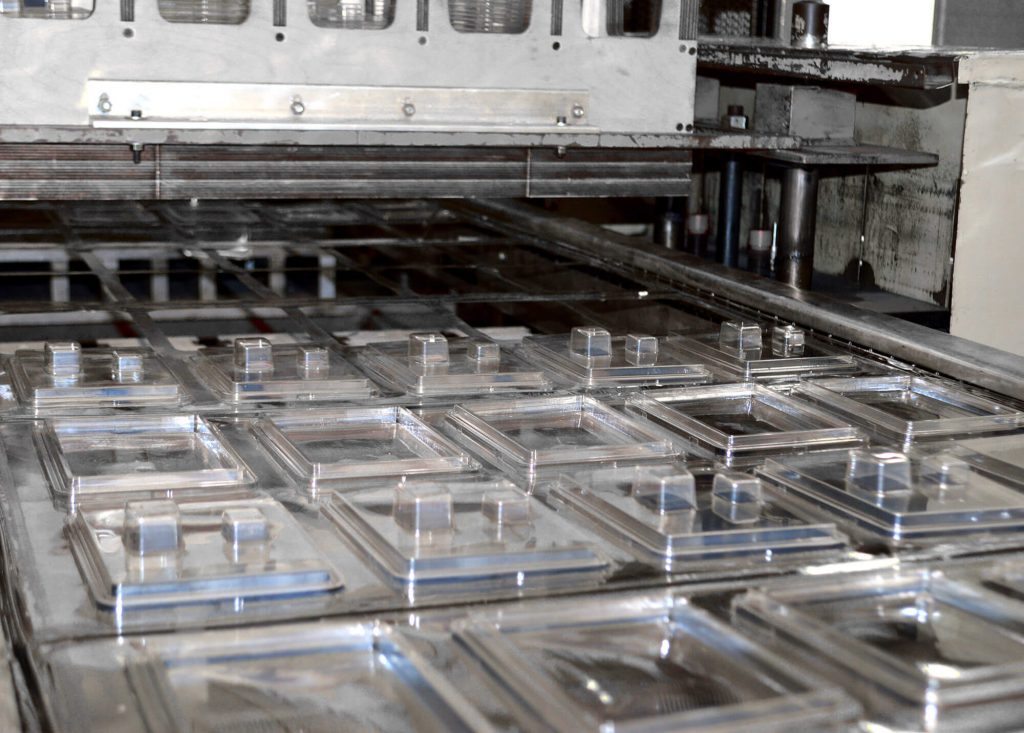Complete Packaging Solutions is your choice for superior packaging. Thermoforming represents one option for packaging solutions that our team can handle.
Read our answers to some FAQs about thermoforming and thermoformed packaging.
What is thermoforming?
Thermoforming represents a process by which a machine heats a thermoplastic sheet to its softening point before stretching it across a mold to manipulate it into the desired shape before it cools and hardens.
Why do packages need thermoforming?
If your packaging needs a custom shape to fit snugly against products, thermoforming offers a great choice.
Thermoformed plastic is also sturdy in that it protects products against nicks and dings during transport.
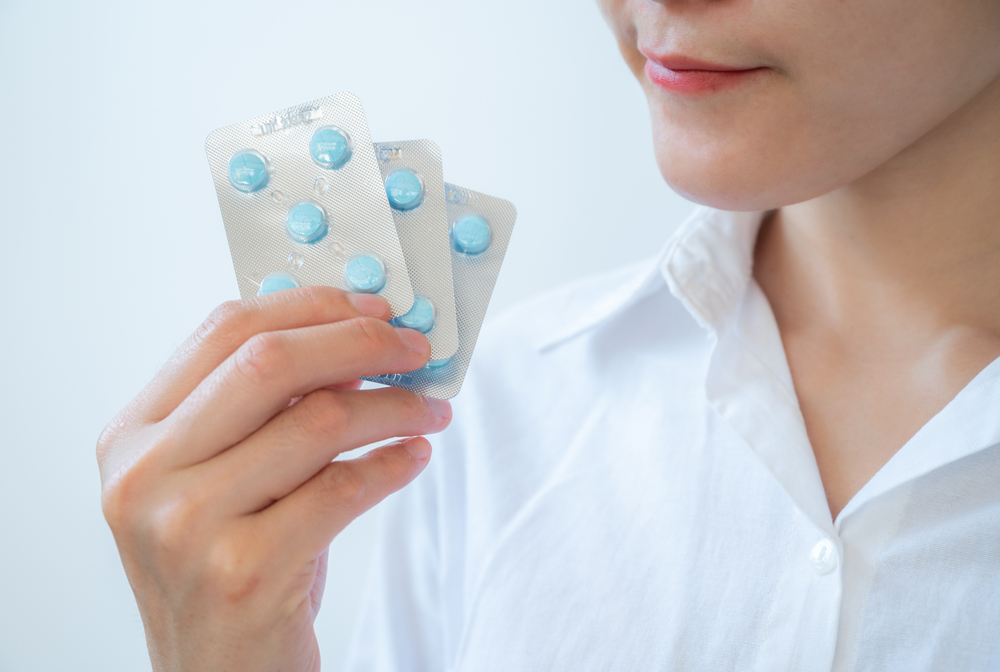
What products need thermoformed packaging?
- Unit dose products, such as medications and drugs.
- Material handling trays that have several items in the same section.
- Gift packs to keep individual items separate.
- Clamshell packaging for food as well as health and beauty products.
- Products that need custom-fit packaging.
- Trays for nurseries for small plants and seedlings.
- Kits with several parts.
- CPG being sold in club stores, like club packaging.
What is the basic process of thermoforming?
Vacuum forming combines heat and pressure to draw the thermoplastic sheets into the final configuration before it cools. The sheet is placed over a mold, and the vacuumed air moves it into the shape we need.
Pressure forming uses vacuum air along with additional pressure to form more detailed shapes in your packaging.

What is the complete thermoformed packaging process from start to finish?
- Conversation
- Design
- Material Selection
- Tooling
- Prototyping
- Thermoforming
- Trimming and Die-Cutting
- Shipping
Conversation is the start of this process. Your chosen packaging solutions company should have detailed conversations with you, including asking questions about your requirements and standards while giving you recommendations on the material and color options and a timeframe for completion.
Design requires input from all sides. Most companies use CAD, or computer-aided design, to create a prototype from precise measurements.
Material selection is an important step. In general, polyethylene terephthalate (PET) is the plastic of choice for thermoforming. This material is rigid and recyclable. PET also comes in many thicknesses and can be colored any way you want, including transparent.
Prototyping creates a physical copy. Before we mass-produce your packaging, we ensure all measurements meet your specifications. This is probably the most important step aside from the CAD process.
Tooling helps your packaging take shape. This part of the process is when your packaging solutions company turns a design into a mold over which the thermoformed packaging will stretch.
Let the thermoforming begin! Once we verify the prototype fits perfectly, we begin mass production of your thermoformed packaging.
Trimming and die-cutting each piece. Remember, your packages start as a sheet of plastic. Once the sheet receives its shape and cools, we trim the sheets so they fit into boxes for shipping.
Shipping to your place. The final step is that we ship the packaging to your place so you can fit them around your products. We can ship items for you as part of our kitting and fulfillment service.
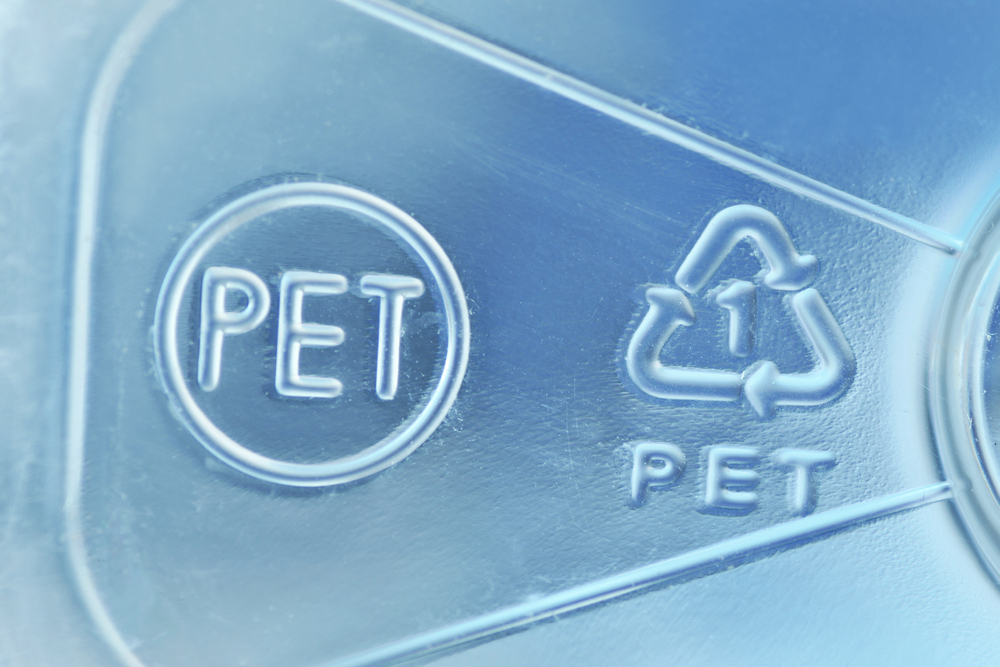
What plastic materials can go into thermoformed packaging?
- Polyethylene terephthalate (PET) is the most common choice for a wide range of industries.
- High-impact polystyrene (HIPS) for very pliable food packaging.
- Acrylonitrile styrene butadiene (ABS) is a very rigid, sturdy plastic with great resistance to impacts, chemicals, and UV light.
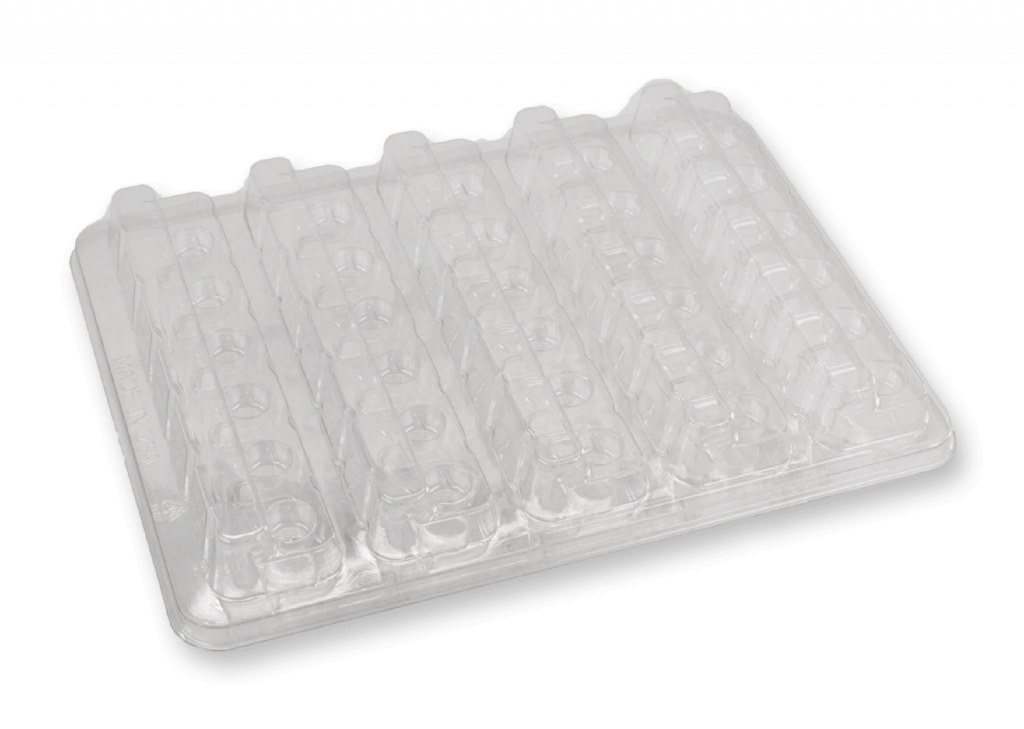
What are thermoformed trays?
This type of plastic packaging minimizes movement of components. Thermoformed trays come in handy for medical components, kits, gift packs, food, parts that require assembly (like for the automotive industry), and packaging large quantities of individual items in the same box.
Thermoformed trays, when combined with the right sealing technique (like heat sealing and RF sealing), keep items safe and secure during shipping and handling to keep them intact and in place. This is particularly important when you want to showcase some or all of the products in clear packaging so customers can see your products clearly before choosing to purchase them.
For example, you sell a meal-kit that has several different components that people can assemble at home. The meal kit includes several colorful fruits and vegetables to make a salad. It’s important to keep the ingredients separate until assembly to prevent spoilage while giving your products a better chance of staying fresh during refrigeration.
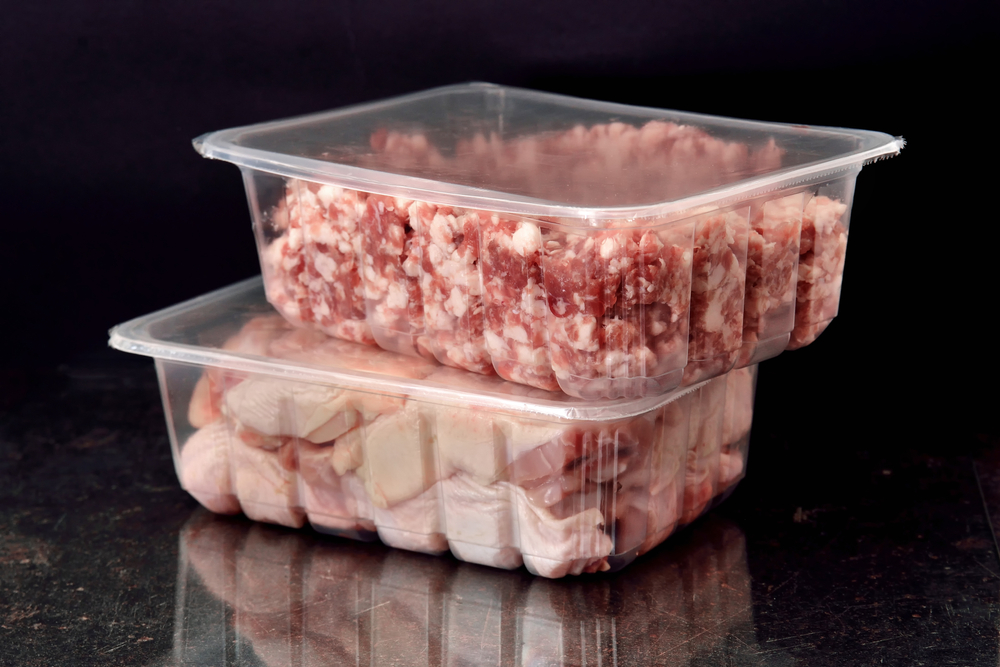
What is thermoformed food packaging?
This type of packaging keeps your food fresher by offering sturdiness and sealing your products inside the package. Thermoformed food packaging comes down the line horizontally, then your machines put food inside, and then the seal comes down on top of it to keep foods safe inside.
When you use this type of packaging for foods, you have the potential to reduce damage during shipping while increasing shelf life. This is particularly true for perishable foods that require refrigeration or special handling requirements.
Think clamshells and clear plastic packaging that protects food while maintaining visibility.
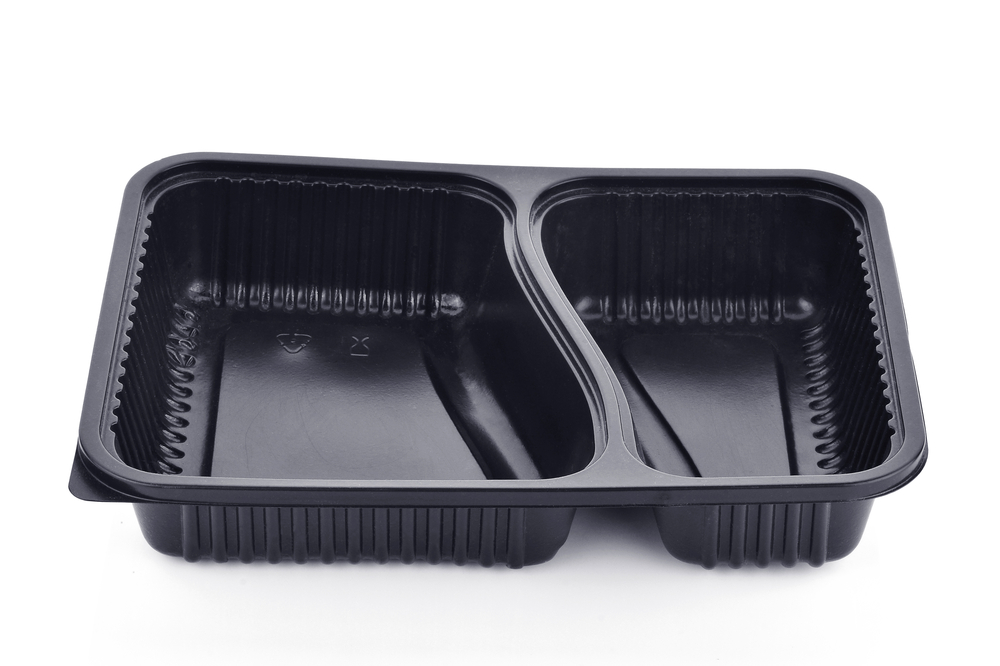
What are the benefits of thermoformed packaging?
When you choose thermoformed packaging for your products, you realize several benefits, including:
- Protecting your products. This type of packaging is durable for protection during shipping and logistics. Numerous sealing options, including clamshell and heat sealing, can extend shelf life while resisting tampering.
- Cost-effectiveness. This kind of packaging can save you up to 15% on costs compared to injection molding techniques.
- Sustainability. PET is recyclable, and consumers are becoming more and more conscious of products that are better for the environment.
- Design options. Thermoformed packaging provides companies with endless creative options for CPG products on the shelf. You have colors, labels, and branding that make products stand out from others.
Related Post: Top Considerations for Thermoformed Packaging
Why should a manufacturer invest in thermoformed packaging?
Your company has several reasons to invest in this type of packaging.
- Low tooling costs compared to injection molding. Thermoforming requires less annual volume, as well.
- Better efficiency due to a production-line format that maintains a continuous feed from start to finish.
- High speed for just-in-time (JIT) production when you need packaging fast to reduce storage costs and improve time to market.
- Easier to customize through computer-aided design.
- Weight-related savings versus other packaging styles to save on shipping costs.
- Readily available materials to reduce supply chain disruptions.
- Customizable to adapt to the needs of several products or production runs.
- Extensive choices for shapes, sizes, and even textures.
Who do I contact for thermoformed packaging solutions?
Complete Packaging Solutions has decades of experience in the packaging industry. We’ve worked with national brands such as L’Oreal, Procter & Gamble, Hasbro, and Hitachi, some of which required thermoformed packaging for their products.
Reach out to us or call 765-547-1300 to talk about our full-service thermoformed packaging to take your products and efficiency to new levels.
